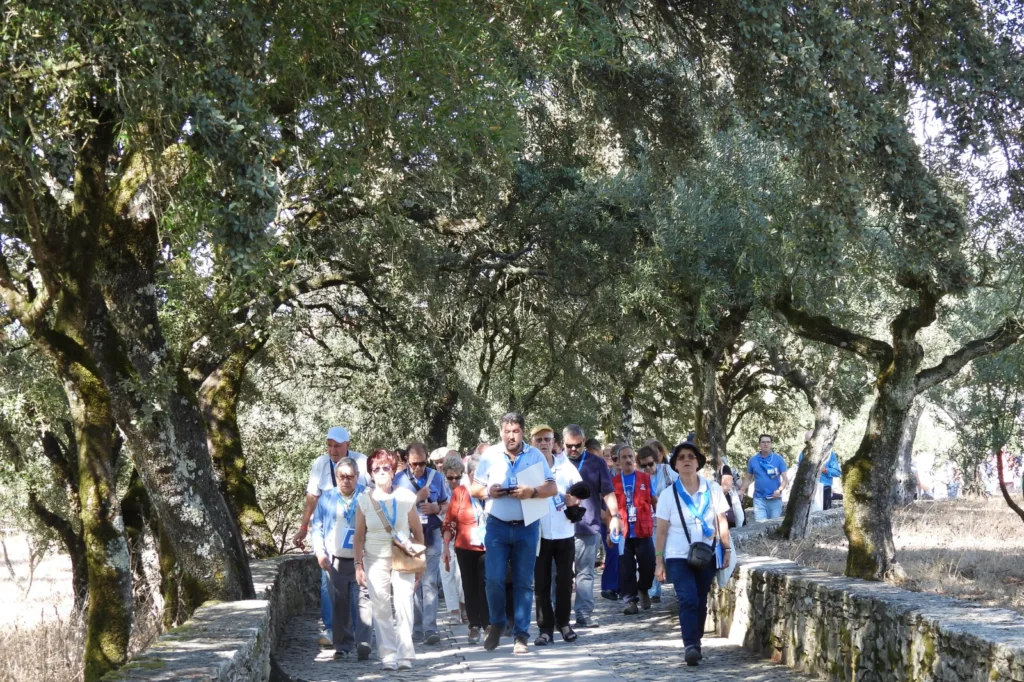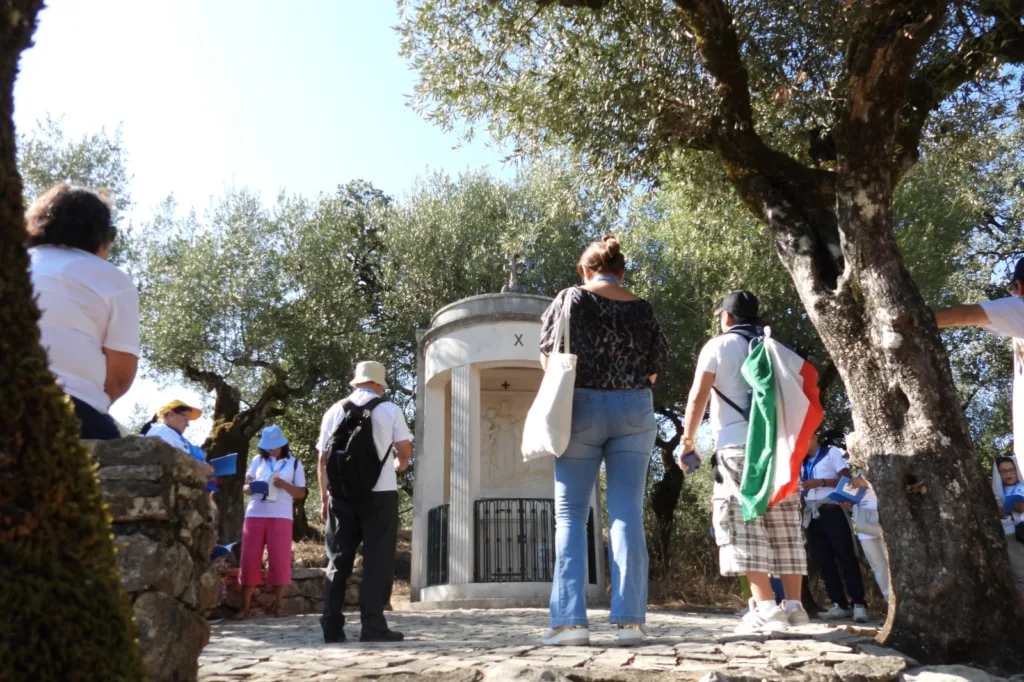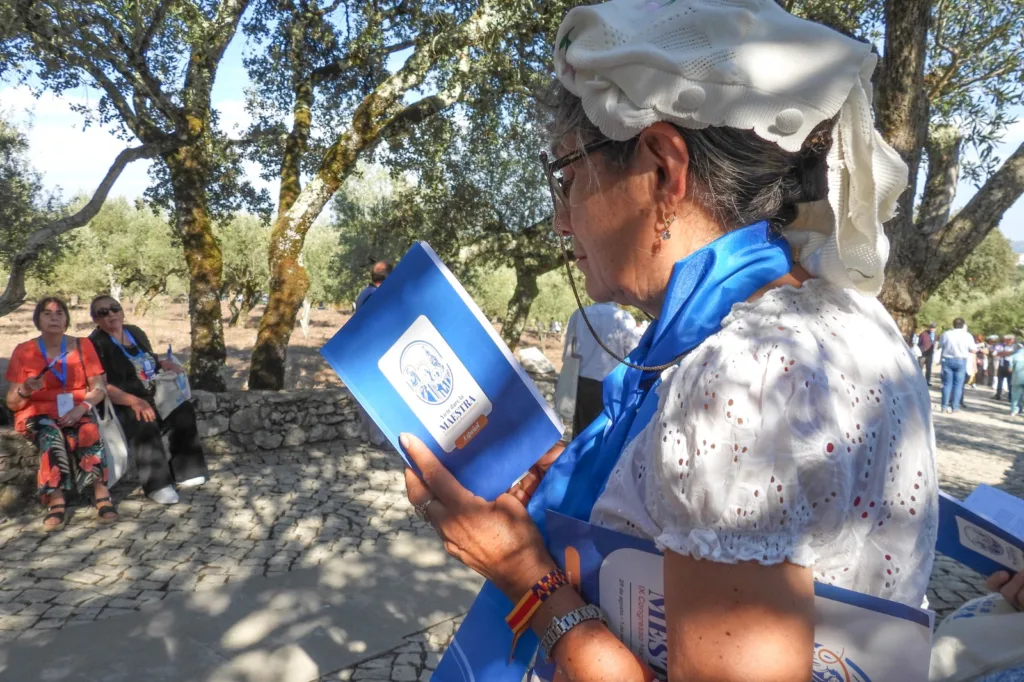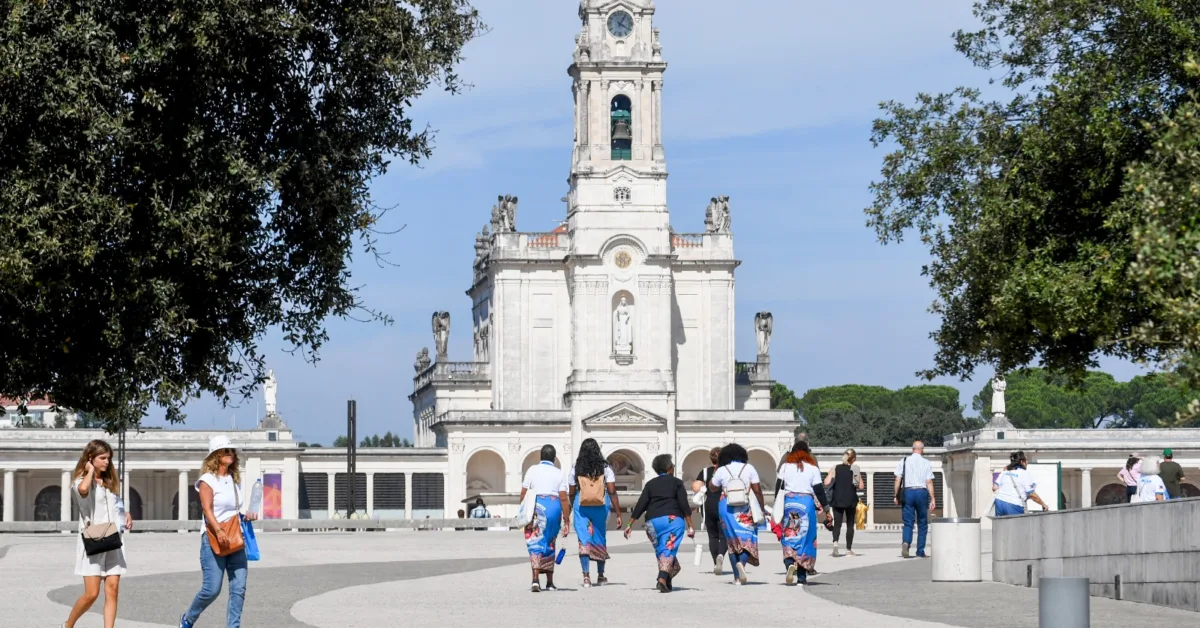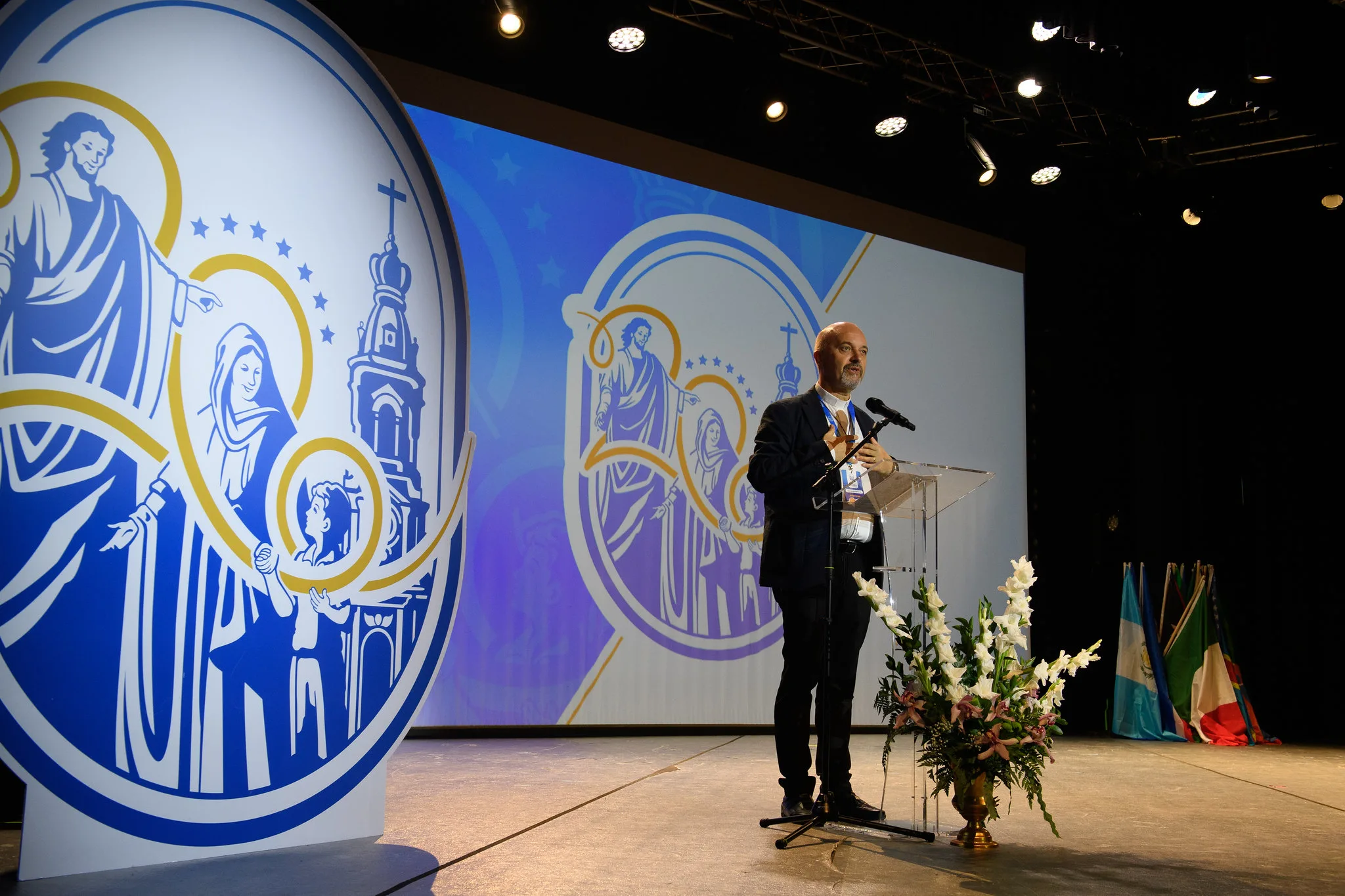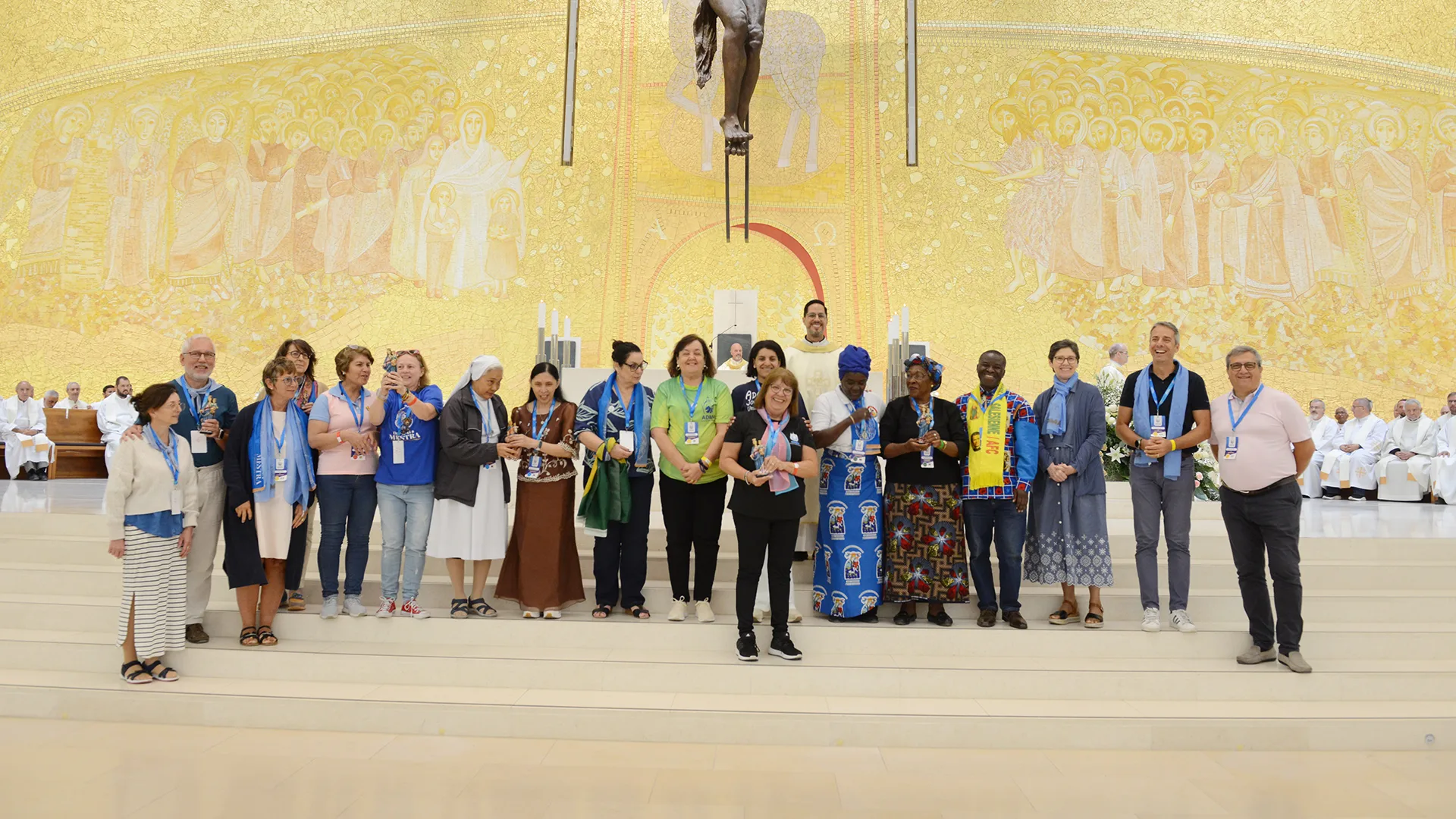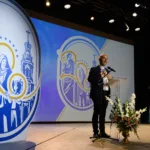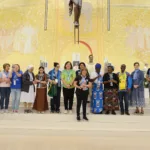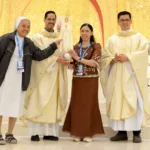On the second day of the meeting, the participants, divided into language groups, had the opportunity to go on some cultural visits that allowed them to get to know a little better the main places of devotion and spirituality that make up this emblematic pilgrimage destination.
Starting at the Basilica of Our Lady of the Rosary of Fatima, the cultural visits aimed to immerse the participants in the spirituality and history of Fatima. There, it was possible to contemplate the burial place of Saints Francisco and Jacinta Marto, as well as the Venerable Lucia de Jesus.
The route continued towards the Chapel of the Apparitions, the ‘heart’ of the Shrine. Erected in 1919 on the exact spot where the Virgin Mary appeared to the three little shepherds, there you can pray before the image of Our Lady of the Rosary of Fatima and learn about the history of this small chapel, restored after an attack in 1922.
The Basilica of the Most Holy Trinity, a contemporary building inaugurated in 2007 with the capacity to welcome more than 8,500 pilgrims, was also a highlight. The building, with its vast circular space, is marked by symbolism that refers to communion with the Universal Church.
The Galilee of the Apostles St Peter and St Paul, a space for reflection and introspection decorated with tile panels by Álvaro Siza Vieira, was also included in the itinerary. The place gives access to the temporary exhibition ‘Rosarium: Joy and Light, Pain and Glory – The Rosary as a Path to Peace’, which is on show until October 2024.
The participants also visited Pius XII Square and John Paul II Square, where there are statues in honour of Popes and Bishops who have marked the history of the Church and devotion to Our Lady of Fatima.
Along the way, the participants also visited the High Cross, an imposing structure 34 metres high, as well as the Prayer Area, a space dedicated to celebrations and moments of recollection.
The Formigão/Fischer Memorial and the Berlin Wall, which commemorate historical events and important figures in spreading the message of Fatima, as well as the permanent exhibition of the Museum of the Shrine of Fatima, which preserves and publicises the memory of the apparitions, were also highlighted.
In the Presbytery of the Prayer Area, designed by the Greek architect Alexandros Tombasis and the architect Paula Santos, and with a capacity for 120 concelebrants, the participants were able to see the cross and sculpture of the crucified Christ by Filip Moroder Doss. As for the monument to the Sacred Heart of Jesus, given its location in the geographical centre of the Shrine, it was possible to reflect on the centrality of Jesus Christ in the message of Fatima.
The visits, which also included the Press Centre and the architectural complex of the Colonnade, ended with a viewing of the film ‘Fatima, a breath of the Spirit’, which shows the message that Our Lady left in Cova da Iria during the apparitions of 1917. The film ends by highlighting the relevance of the message of Fatima.
The cultural visits, part of the IX International Congress of Mary Help of Christians, were thus an important moment of renewal and communion for all the participants.
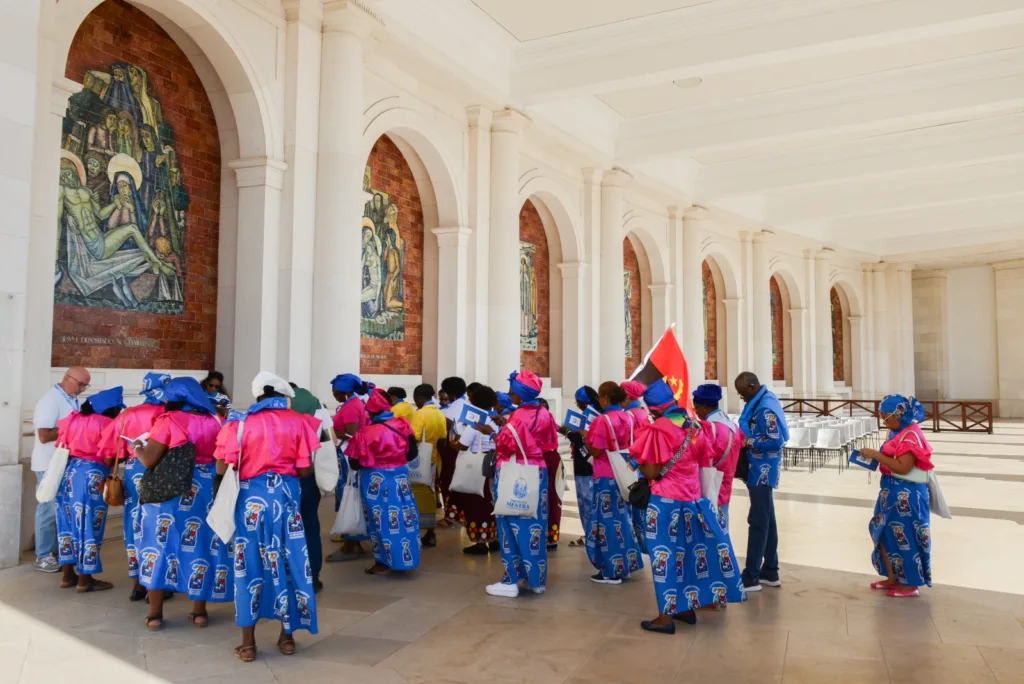
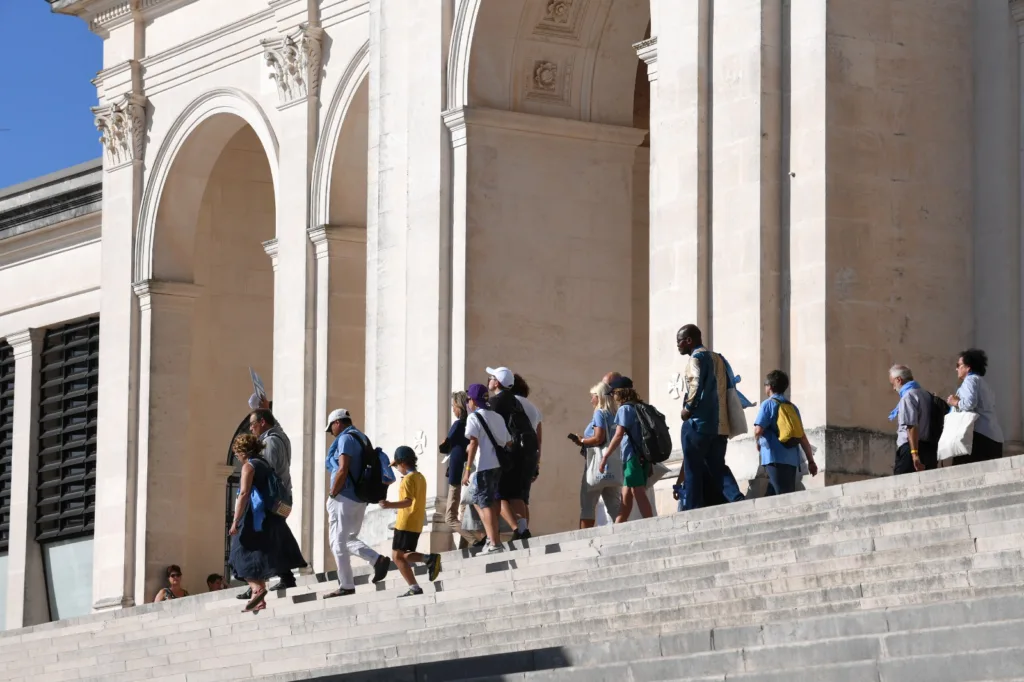
Way of the Cross: an expression of faith
On this second day, the participants also had the opportunity to make the Way of the Cross, recalling the journey Jesus made to his death on the Cross. In a moment of deep spirituality, the groups brought their culture and languages to the heart of the celebration, transforming each station into an expression of their faith.
